- Becoming a Character Artist
- Recommended FlippedNormals Tutorial and Resources
- Harsh Truths to Accept
- Examples of excellent portfolios
- What is a 3D Character Artist?
- The Process of Learning Character Sculpting
- Tools & Software
- Anatomy & Figure Sculpting
- Common Issues
- Practicing
- Store Your Work!
- Studies
- Additional Resources for Becoming a Character Artist

Orc by Antoine Verney-Carron
As with anything rewarding, this also requires a lot of hard work. To be a successful character artist, you need to have a solid foundation in a lot of fields, which takes time and dedication to learn.
Whether you're a beginner looking to become a character artist, or you've been trying to learn character art for a while without much progress, this article is for you! The foundation for all character art is figure sculpting, so that will be the primary focus of this article. Everything else, such as topology, UVs, shading, etc., is secondary to figure sculpting.
Whether you're a beginner looking to become a character artist, or you've been trying to learn character art for a while without much progress, this article is for you! The foundation for all character art is figure sculpting, so that will be the primary focus of this article. Everything else, such as topology, UVs, shading, etc., is secondary to figure sculpting.
Introduction to Sculpting
We highly recommend this course for everyone who wants to learn how to sculpt. The tutorial series contains everything we've learnt over the last 17 years of sculpting. Learn what appeal is, understand gesture, block out your sculpts, sculpt stylized characters and a lot more concepts you won't learn elsewhere.
Introduction to Anatomy
We're going to teach you all about the human body so you can create really cool characters. We'll make the tricky stuff simple, so even if you're new to this, you can still learn a lot. We'll teach you about bones, muscles, fat, and skin, and how to use them to create 3D characters that people will love!
FlippedNormals Anatomy Bust
Understanding the anatomy of the head and face is incredibly important for character artists, and we built this anatomy bust to help you learn head anatomy easier. It's a unique take on the face anatomy, as it focuses far more on the fat pads of the face compared to the tiny face muscles. Facial muscles are important for expressions, but for a static face fad pads are far more important. I personally use this tool for all my face sculpts, from realistic faces to creatures.
Fundamental Anatomy for Sculptors
This is an incredible tutorial series by Christian Bull that covers a lot of fundamental sculpting and anatomy concepts not found in other tutorial series. We recommend this tutorial series once you feel comfortable sculpting and want to take your work to the next level.
Realistic Character Portrait Masterclass
We made this masterclass for intermediate to advanced 3D artists who wants to learn how to make a full character bust, start to finish. Everything is shown in realtime, from the first concept sculpt, retopology, UV, texture painting in Substance Painter, to doing the final pores. We also cover skin shading and rendering in Blender. We highly recommend this course for anyone who understands how to use 3D software and wants to improve their character workflow.
Harsh Truths to Accept
Before we begin, we need to acknowledge two harsh truths that are often overlooked:
- There are very few positions available for character artists. It's unknown exactly how many, but we're most likely talking only a few thousand positions world-wide.
- A character artist position is not an entry-level job. While there are junior character artist positions available, the people who get these jobs are usually already highly skilled artists who have been doing character work for years. Characters in a movie or game are often the most important asset and require a lot of time and effort to create. To be trusted to work on such important assets, you'll need to be technically and artistically strong.
All of this means that starting as a character artist right out of school is not very realistic for most people. While it does happen, it's quite rare.
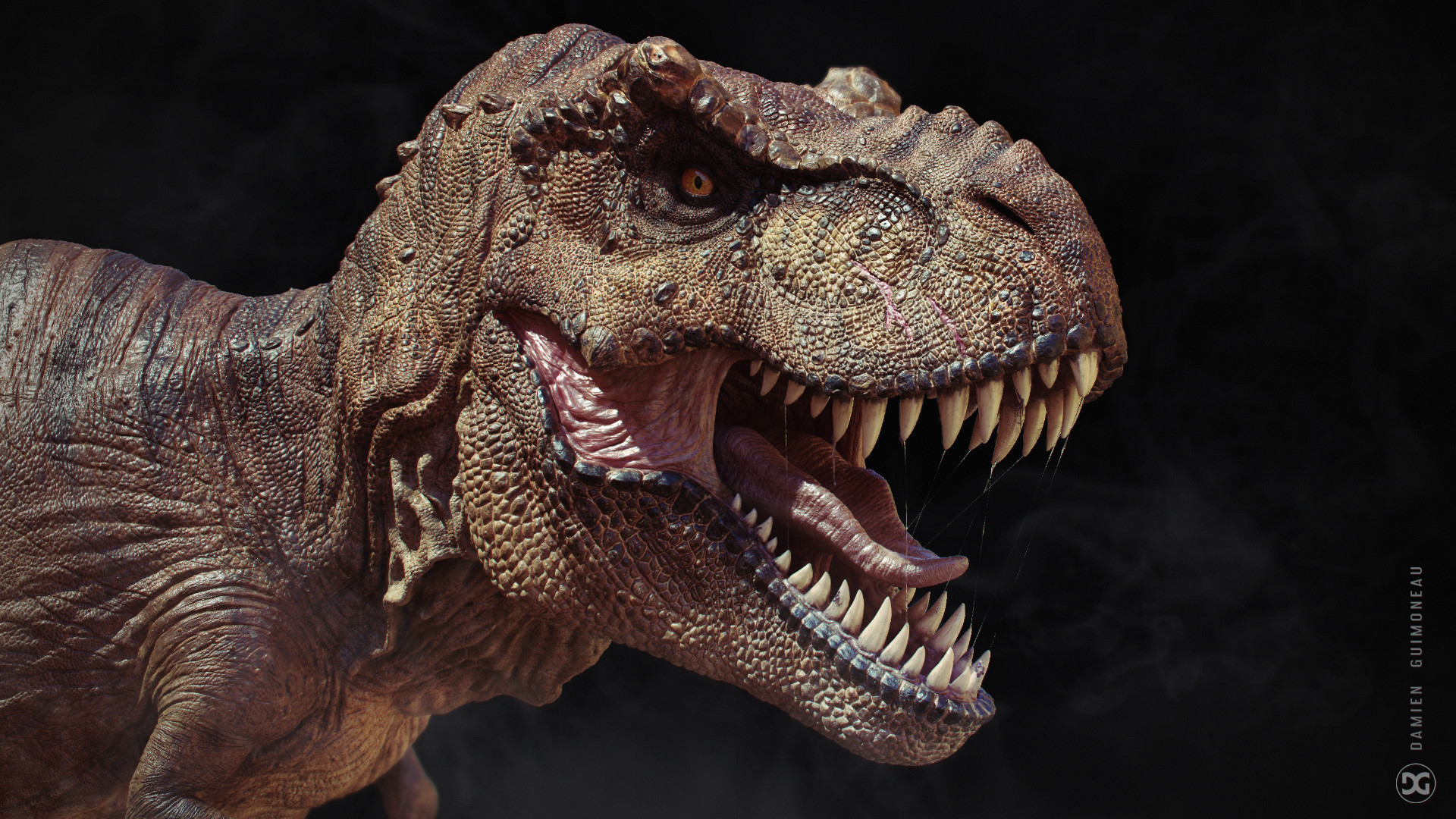
Lil Puppy Rex by Damien Guimoneau
Examples of excellent portfolios
Here's a collection of excellent 3D character artists
What is a 3D Character Artist?
A 3D Character Artist is someone whose primary job is creating characters and creatures. This tutorial isn't industry specific and applies to anyone who wants to do character art as a career or seriously improve their skills. Whether you want to work in games, film and VFX, or figurines, this will be useful to you.
1. Expose Yourself to Character Art
Get as much exposure to character work as possible. Go to museums, look at statues in town, and put your favorite characters as phone and computer wallpapers. You'll feel inspired and you'll learn even when you're not sculpting.
2. Learn the Tools
Become familiar with a main 3d Software (Maya, Blender, Max) and ZBrush. These tools will be your best friends over the next few years, so the earlier you become comfortable with them, the better.
3. Start Sculpting!
Start sculpting in ZBrush and have fun. You'll have to sculpt a lot to get used to the tools and how to sculpt people. The more practice you do, the better.
4. Slowly Introduce Anatomy Studies
Study anatomy, as it's important to get a good understanding of the muscles and bones.
5. Switch Between Figure Sculpting and Anatomical Studies
If you only do anatomical studies, you’ll get bored. Switch between figure sculpting and anatomy studies. You'll start to notice that everything you learn in your anatomy studies will help your figure sculpting!
6. Start Doing Your Own Projects
You should now be at a level where you can start doing your own projects and have fun with the characters! You've been doing figure sculpting for a while and have a decent understanding of anatomy. It's time to take a character from start to finish!
7. Switch Between Personal Projects, Figure Sculpting, and Anatomy Studies
The ultimate goal is for you to create your own awesome personal projects! You're now at a level where you should be able to make really cool projects without worrying about basic figure sculpting mistakes.
Pro Tip
Getting a lot of Likes on social media doesn’t mean that your art is good or that you’re progressing. Think about Likes as "vanity-metrics". They make you feel better short term, but aren't measuring progress or skill in any way.
The goal with exposing yourself to character art, is for your brain to get used to this new world of making characters and to constantly try to improve on your work. You won't have ZBrush around all the time, but you'll often see people (characters) and animals (creatures), so you'll have plenty of opportunities to observe and improve even when you aren't sculpting. L
Lack of observation is a huge issue. By exposing your yourself to characters and creatures, you'll gradually get an intuitive understanding of how they work - both regarding mechanical anatomy, but also in terms of how people behave, fashion and designs.
The FlippedNormals Eye Kit gives your character instant film quality eyes. Available for games and film workflows.
Tips for Improving Your Character Art
- Whenever you see people, imagine what their skeleton looks like. The skeleton is the foundation for everything when it comes to making characters and creatures. Don't worry about the details, it's more important to think about the bigger and simplified shapes. This will make it easier to visualize the skeleton when you're sculpting.
- Carry a sketchbook with you everywhere you go and sketch people. You don't have to be a great artist, nobody will ever see these doodles. This exercise helps you develop an intuitive understanding of characters.
Tools & Software
You'll need two kinds of main tools: A full 3D package and sculpting software.
Full 3D Packages
3ds Max, Blender and Maya. These are the most used 3d software, and we highly recommend that you learn one of them. Pick the one you prefer.
Sculpting Software
ZBrush is only sculpting package being seriously used and it's dominating both games and film. For people who can't afford the full version of ZBrush, ZBrush Core is a stripped-down version of ZBrush. You can also sculpt using Blender, but the sculpting tools are nowhere near as good as ZBrush and we recommend moving to ZBrush eventually.
Everything you need to know about getting started with ZBrush.
Clothing Software
Marvelous Designer is really the only tool available for making clothing. We won't talk more about Marvelous Designer, but be aware that it's available for you once you need to do clothes.

Learn how to make a full costume wih Streetwear Outfit In Marvelous Designer
Tablets
You need a tablet for sculpting, as it offers far more control and freedom than a mouse. A mouse will destroy your hand and arm in the long run. Wacom and Huion makes good tablets. Don't worry too much about which tablet you're getting, as you can always upgrade as you're getting more advanced.
Anatomy & Figure Sculpting
Anatomy is an essential of making characters but in the beginning, it’s better to focus on the general figure instead of hardcore anatomy studies. Memorize large amounts of muscles and bones isn't useful if you're still having core sculpting issues. There is definitely a time and place for it, but as you’re getting started, it’s more important to get an intuitive understanding of the general figure before, moving onto extremely technical and obscure terms. Anatomical knowledge doesn’t mean you can sculpt.
Once you have a decent knowledge of how the human figure looks and you’re comfortable making clean shapes in ZBrush, we recommend that you start looking into more serious anatomical studies.
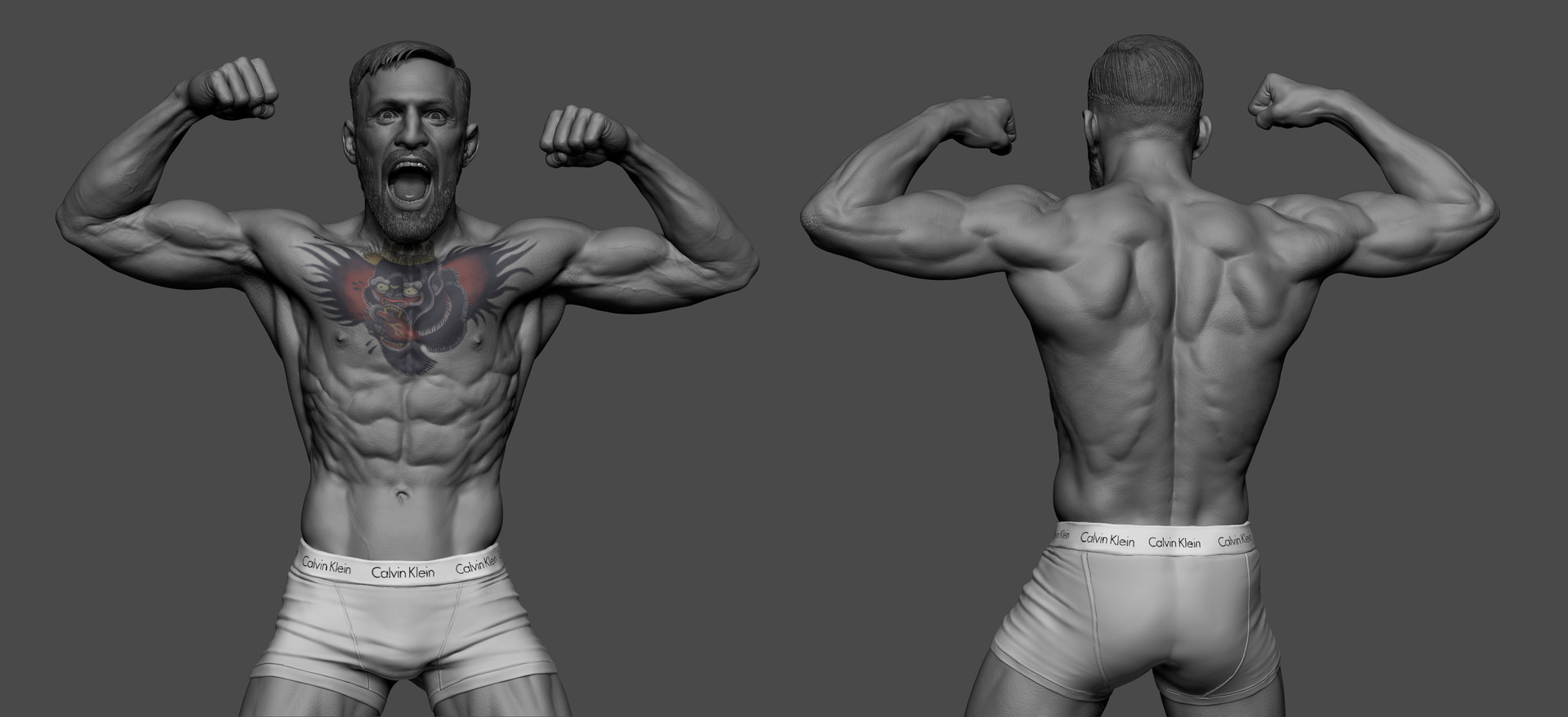
An awesome Conor McGregor study by Abdelrahman Kubisi
Always Improve Your Weaknesses
As you’re progressing, you’ll find that you’re becoming better at certain parts. Make sure that you’re well aware of your weaknesses and that you’re trying to improve them. If you’re weak at sculpting ears, start to do isolated studies where you properly learn how an ear works.
Once you have a good understanding of how the ear works, it’s important to do studies in-context where you learn how the ear relates to the other parts. Study both in and out of context: In isolation, you’ll dedicate your full attention to what you’re sculpting, and in-context, you’ll understand how it relates to the bigger picture.
Common Issues
The most common issue we've seen when it comes to beginners of figure sculpting is that the body is treated like a potato, where you carve certain features, only hinting at anatomical features. We cover this in-depth in this video, which will explain the issue better than text ever can.
Practicing
To be successful as a character artist, you will have to sculpt a lot. This isn't a side project you work on for a bit here and there. It requires you to put in the hours, ideally every single day. Below, we’ll give you an outline for a practice plan which you can follow. If you keep doing these exercises, you’ll improve significantly!
When you’re starting, remember: HAVING FUN IS IMPORTANT! It’s impossible to learn anything without finding it interesting and fun. Sure, there are boring bits, but if you find yourself demotivated, it's time to do sculpts purely for the fun of it.
When studying, base all your work on reference images. It’s important that you have something real to compare your sculpts to, otherwise it can be hard to really find specific areas to improve in. Sculpting from the imagination, particularly crazy creature sculpts, is a lot of fun, but try to keep the majority of your studies grounded in reality. Never excuse a bad sculpt as a 'design choice'.
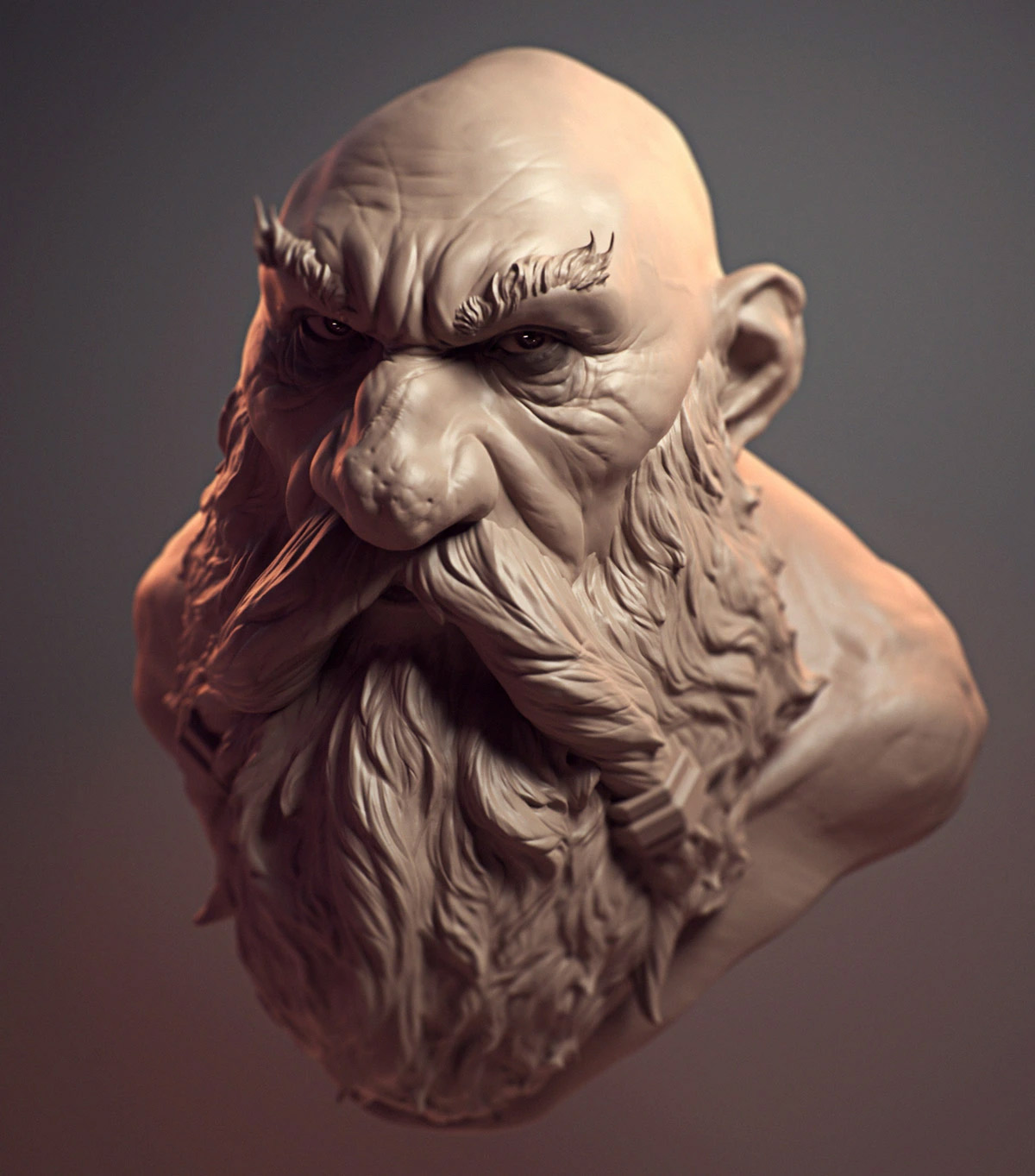
Learn how to sculpt in Introduction to Sculpting
You’ll Suck in the Beginning
When you're starting to sculpt, you’ll have to accept another harsh fact: You’ll suck in the beginning. It takes time until your work gets to a decent level. Accepting this will help you a lot, as you’ll know there’s a reason why your work won’t be amazing. Every single sculpt you do will improve and the harder and more efficient you work, the faster your work will improve.
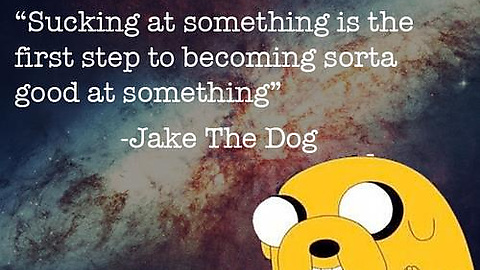
Perhaps the hardest part of becoming a character artist is to not quit. Most people give up at the beginning, as they aren’t able to get through this ‘Valley of Sucking’. Once you do, you’ll start to feel that it ‘clicks’ and you ‘get’ sculpting.
Store Your Work!
Save all your sculpts! Make sure that you store the ztools and that you take screenshots of them. At some point, you'll feel demotivated. It’s important that you save your work, so that you can always return to it, measuring your progress. You’ll become blind quickly to your own work, so you’ll need something to measure it against.
How good you feel about your art depends where you are in the cycle, not based on the actual quality of your art.
Take a look at the graph below, save it to you desktop, and whenever you feel bad about your art, look at it.
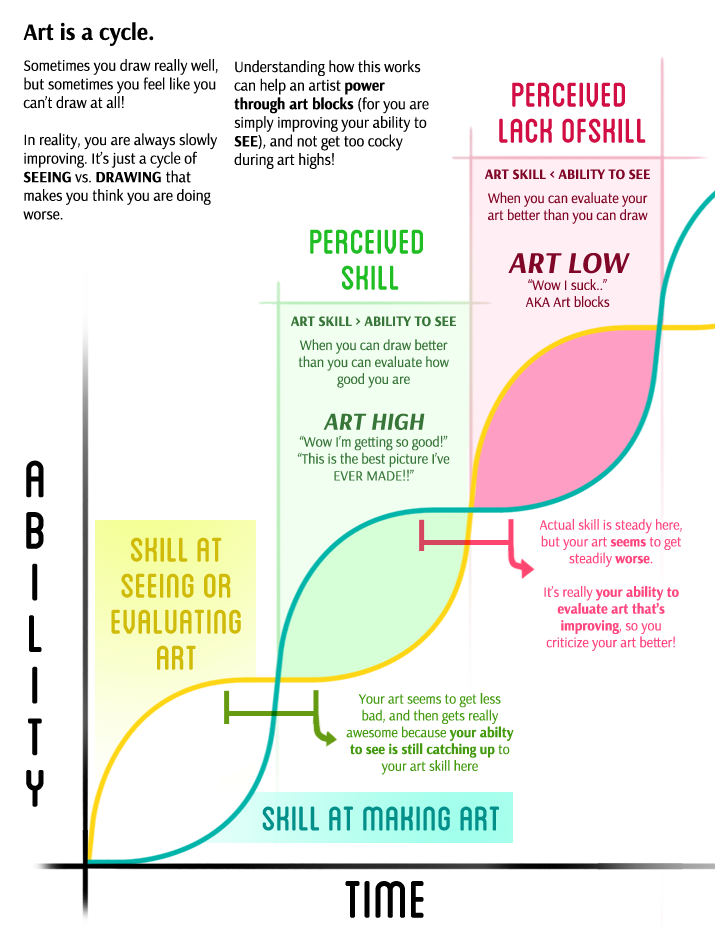
Studies
Try to do the sculpts from zspheres, dynamesh or sculptris pro - and not from predefined base meshes. If you use a base mesh, a lot of issues have already been solved, like proportions and gesture. In a real production, you’d use base meshes, but for learning purposes, it’s better to start from scratch. Once you get more experienced and you’re making portfolio pieces, then you should use all the resources you have available, including base meshes.
You’ll notice that the different studies are timed differently. This is called Timeboxing. It means that you need to have all of your work done within the time limit. This isn’t to stress you out, but rather to make sure that you learn to prioritize. If you’re doing a full figure sculpt and you have 1 hour, sculpting detailed eyes would be a waste of time. As you keep sculpting, you’ll gradually realize what’s important in a sculpt.
It’s important to do longer and shorter studies and to stay within the general time limits. You’ll learn different things from long and short studies. For the shorter ones, you’ll learn to only prioritize the important parts, like weight, proportions, bony landmark, etc - while for the longer studies, you can make them a lot better, such as specific facial features, muscles, individual fingers, etc.
Pro Tip
Write down how much time you spent on each sculpt. As you’re progressing, you’ll get better and faster all the time, but in order to really judge this, it’s important to have something to compare it to.
You’ll also do studies which focus on different parts of the figure, from full body, head studies to specific body parts, like the hands and feet.
Consider everything presented here to be suggestions only and modify it to whatever works for you! It’s a starting point which will give you a couple of different interesting challenges, but there a hundred different ways of approaching anything!
Life Drawing
If you have access to life drawing, do it! Life drawing will dramatically improve your figure art, and you’ll get a far better understanding of the figure if you draw from life instead of from photos.
Line of Action has a great figure drawing tool where you can draw from photos where you can set time limits.
Full Body Studies
These are studies where you sculpt the entire body. You don’t always have to get every detail in there. Sometimes the fingers and toes can be combined into one shape. The important part is the overall volume of the figure, from the head, arms to the toes.
If you can, sculpt without symmetry in a couple of different poses, from neutral and relaxed to extreme poses. It’s also important that you sculpt people with different body types, from skinny, muscular, chubby, old and saggy. You want to learn what people actually look like.
Time Frames
- 10 min - You’ll only ever be able to get the gesture
- 30 min
- 1 h
- 3 h - You can get the volumes down, but not specifics.
- 5 h
- 10 h
- 15 h - All features should be here, including all fingers.
Examples
- 15 hour refined sculpt of a 25-year-old muscular man
- 30 min rough sculpt of a old man hunched over
- 5 min gesture sculpt of an athlete jumping (maybe only zspheres?)
- 3 hour sculpt of a Chinese baby
- 1 hour sculpt of 60-year-old Sioux
Head Studies
The head is so important, and you’ll need to do specific portrait studies. Everything should be sourced from real-world reference. The amount of variation in the face is insane, so you’ll need to sculpt a large range of people.
Pro Tip
When you’re sculpting faces, having a mirror at your desk will be a huge help.
Age, ethnicity, weight, facial expressions, and so on should be varied between the studies. The point is to get real variation in what you’re sculpting.
Time Frames
- 10 min – You’ll only ever be able to get the gesture
- 30 min
- 1 h
- 3 h – You can get the volumes down, but rough.
- 5 h
- 10 h
- 15 h – All features should be here.
Examples
- 5 hour study of a 50-year-old woman from Central-Africa
- 10 min speed-sculpt of a 30-year-old caucasian from Ireland
- 3 hour sculpt of a 90-year-old chinese woman
- 1 hour sculpt of a 5-year-old hispanic girl
- 15 hour sculpt of a 50-year-old American biker
Body Parts
When doing studies, it’s incredibly easy to rush certain parts, like the hands, feet, ears, toes, etc, and spend most of your time on the torso or face. It’s time to confront your weaknesses and tackle them head on! Use the same time frames (though probably closer to a few hours than 15) we presented above and do studies of the following areas:
Facial features
- Ear
- Nose
- Mouth
- Eyes
Body Parts
- Hands
- Arms
- Feet
- Legs
- Torso (body without arms, legs or head)
Additional Resources for Becoming a Character Artist
Books
- Atlas of Human Anatomy for the Artist - One of our favorite anatomy books.
- Anatomy4Sculptors - Amazing resource for simplifying the human figure.
- Gray's Anatomy - Great anatomy book! Most of this is available for free online.
Anatomy Figures
- 3DTotal Anatomy Figures - Cheaper, but smaller and non-detachable limbs.
- AnatomyTools Figures - More expensive, but bigger and detachable arms and head.
3D Scans
- 3D Scan Store - Great 3d scans of real people. Huge range of characters.
- ThreeDScans - Amazing scans from museums
Conclusion
Being a character artist is an awesome job to have and we were both incredibly privileged to have worked in the film industry doing characters and creatures. Both the film and gaming industry are growing and there are always jobs available for skilled character artist. If you work hard, realize that this is a marathon and not a sprint, and keep pressure up, you’ll reach your goals!
We have a bunch of free videos on the FlippedNormals YouTube Channel, which hopefully will help you in your journey.
Best of luck!
Henning & Morten
FlippedNormals



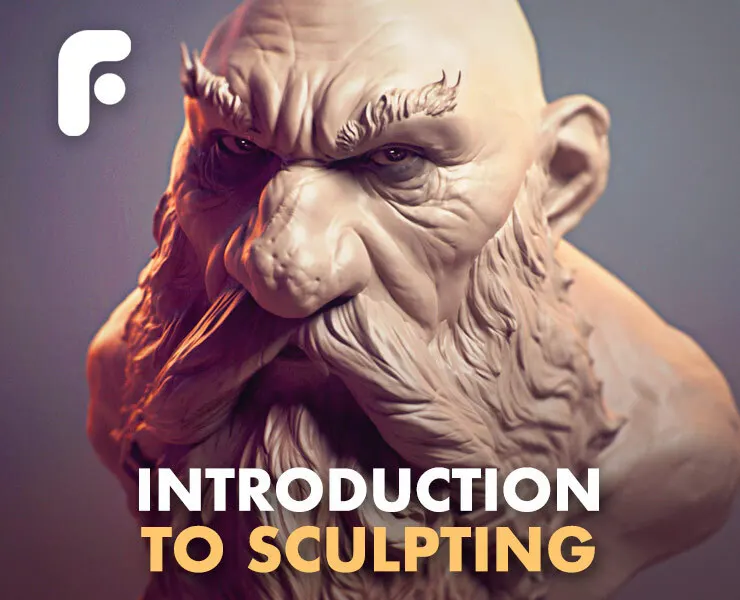

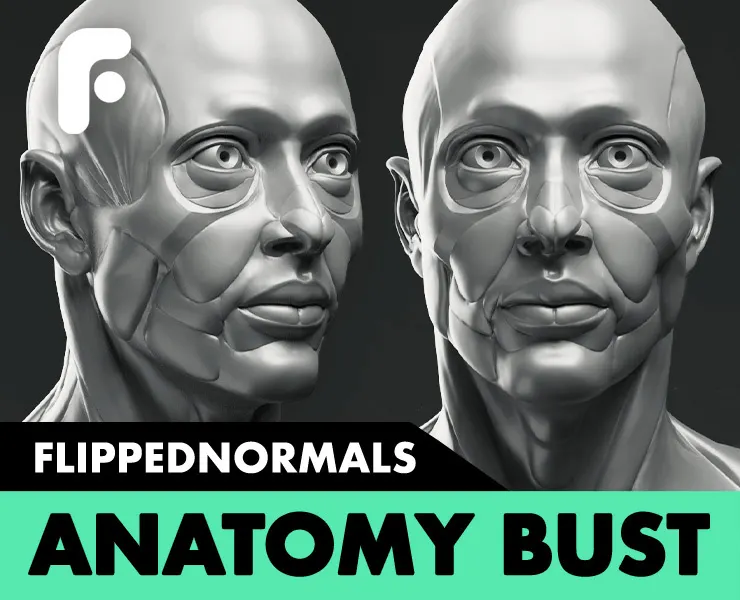




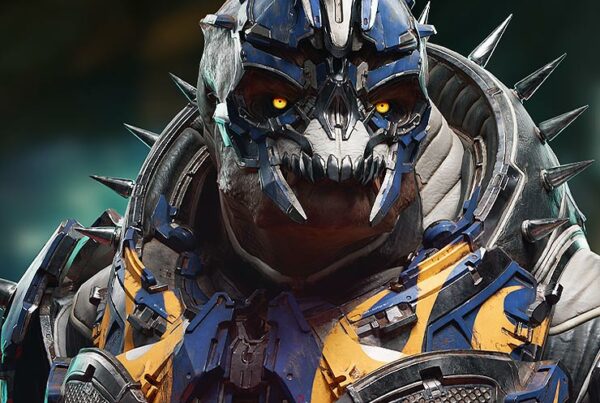
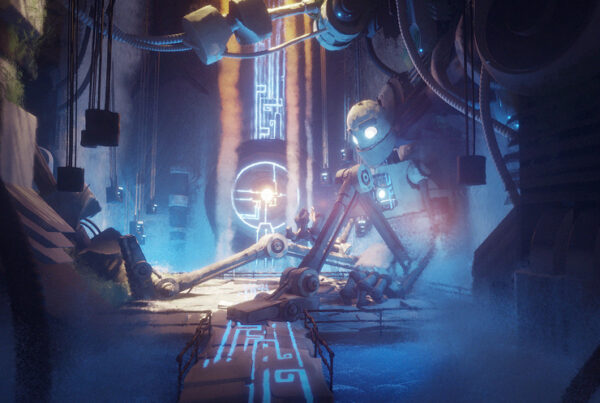
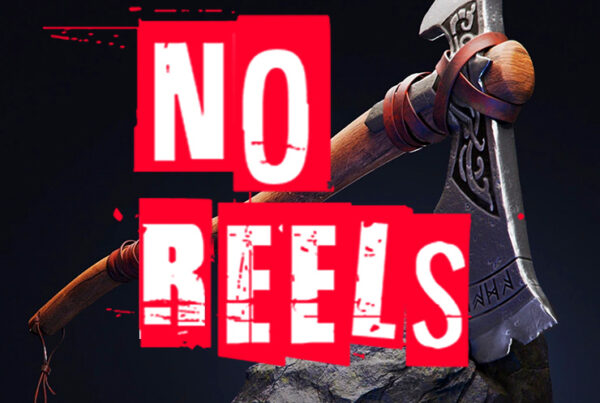
Thank you for sharing your wisdom.
Awesome stuff as always! Keep it up!!
It is great article guys. It really helped me to know certain things. Although, i am in a bit of confusion, as you mentioned, people rarely get a character artist job right after completing studies. Yes that is obvious. I have just completed my studies landed on a job as a junior environment artist in sumo video games, unfortunately i always wanted to be a character artist, and i do have only characters in my protfolio. But having lack of experience, i won’t get what i want at least for now.
So I’m thinking, should i quit my job to study character art or just study after my working hours? think the second way would take a while to jump into character artist job.